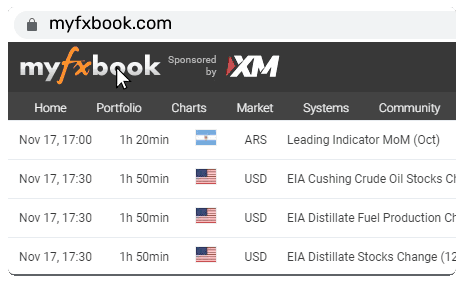Vietnam vs. Indonesia vs. Thailand: Who’s Navigating Tariffs Best?

As Washington’s protectionist rhetoric sharpens under President Trump’s latest trade agenda, Southeast Asia’s major players are confronting the fallout in very different ways. Vietnam, Indonesia, and Thailand have all felt the sting of U.S. tariffs, yet each is charting its own course through the turbulence—some with haste, others with hesitation.
At EBC Financial Group, we are closely watching how each country is adjusting its playbook. From multi-billion-dollar trade proposals to sector-specific stimulus, the region’s responses are as varied as their economies. So who’s making the smartest moves under pressure?
Vietnam: The Fast-Moving Reformist
Among ASEAN’s manufacturing giants, Vietnam appears to be leading the race. As new U.S. duties target exports across textiles, furniture, and electronics, Hanoi has responded with urgency—both on the diplomatic and domestic fronts.
According to our analysts, the revised tariff regime includes a 10 percent base duty on electronics and 15 percent on wood and furniture, scaled down from earlier proposals that reached as high as 46 percent. This adjustment follows Vietnam’s accelerated negotiations to strike a bilateral deal with the U.S., one that is now said to be in its final stages.
But that’s not all. The Vietnamese government is also rolling out targeted aid for vulnerable sectors while advancing broader structural reforms to signal long-term investor stability. This policy agility has sparked optimism in equity markets. As Vietnam Investment Review reports, reform momentum and trade progress have fuelled a rally in Vietnamese stocks.
As David Barrett, CEO of EBC Financial Group (UK) Ltd, puts it: “Vietnam's ability to pivot quickly and preserve market access speaks to its growing strategic importance in global supply chains.”
Indonesia: Pre-Emptive, Proactive, and Playing Big
Jakarta has chosen a bold, pre-emptive approach. With tariffs looming over exports such as palm oil, rubber, and apparel, Indonesia has presented Washington with a USD34 billion trade package. This strategic offer is intended to shield key sectors before full penalties take effect.
In the eyes of policymakers, it’s a calculated bet. As part of the proposed deal, Indonesia successfully negotiated tariff reductions from 32 percent to 19 percent across crucial product lines. This gives domestic exporters a chance to stay competitive, while also buying time to retool industrial policy if needed.
Barrett describes the region’s overall approach as a deliberate reset: “From Vietnam's reform drive to Indonesia's pre-emptive diplomacy, the region is leveraging trade friction as a catalyst for economic recalibration. For investors and traders alike, this is not a story of decoupling—it’s a story of divergence.”
Thailand: Stuck at the Crossroads
While Vietnam and Indonesia are sprinting, Thailand appears to be cautiously advancing. Tariffs announced as far back as April still remain in effect, with local officials now racing to finalise a bilateral arrangement of their own.
The spotlight is squarely on autos and electronics, two of Thailand’s biggest export categories. According to Bloomberg, Bangkok is negotiating for tariff relief on items currently facing a steep 36 percent levy. Delays, however, may prove costly. With investor sentiment already showing signs of strain, the risk of order cancellations is growing.
Unlike its neighbours, Thailand seems to be playing catch-up in a fast-moving game.
The Middle Power Dilemma: Balancing Act or Blind Spot?
Vietnam, Indonesia, and Thailand now find themselves in a delicate position. Their strategic ambitions collide with external pressures, forcing them to act quickly while still preserving long-term competitiveness.
Vietnam is racing to expand support for sectors like footwear and garments. Indonesia’s mega trade package reflects deeper concerns about sustaining investor confidence. Thailand is working against the clock to secure relief for its most exposed industries. Each path highlights a different strategy—but all underscore the same reality: the tariff clock is ticking.
Elsewhere in ASEAN, Malaysia and Singapore are watching with a cautious eye. While not directly hit by the tariffs, both are highly integrated into regional supply chains. Barrett explains the ripple effects:“The ripple effects of U.S. tariff action are already being felt across ASEAN. Whether it's direct exposure or indirect fallout, the urgency to adapt is very real.”
Currency Clues: Markets Read Between the Lines
Foreign exchange markets are also sending strong signals. The Vietnamese dong and Thai baht have displayed short-term resilience, partially thanks to supportive central bank measures and investor confidence in reform trajectories.
Indonesia’s rupiah, however, is under heavier pressure. Bank Indonesia is juggling the dual task of preserving export competitiveness while warding off capital flight. In contrast, the Singapore dollar has seen mild depreciation, in line with its exposure to broader demand cycles.
These FX fluctuations are more than just temporary jitters. They offer real-time insight into how markets perceive each government’s readiness to weather the storm.
What This Means for Traders
For traders navigating this evolving terrain, the story is far from over. The divergence in ASEAN strategies offers both volatility and opportunity. Sector-focused equities—particularly in industries like tech hardware, textiles, and autos—could see re-ratings as deals take shape.
Bond markets are reacting, too. Yields on Thai and Indonesian government debt have crept higher in recent weeks, signalling market anticipation of further policy adjustments. For those watching the region closely, FX trends, central bank actions, and sector-level interventions will be key to uncovering the next big move.
Barrett sums up the broader shift: “Southeast Asia isn't just reacting—it’s repositioning.”
At EBC, we are actively tracking these developments and aligning our strategies to reflect both the risks and the resilience on display. For anyone trading across emerging markets, it is vital to monitor local dynamics just as closely as the global headlines.
Disclaimer: This article reflects the observations of EBC Financial Group and all its global entities. It is not financial or investment advice. Trading in commodities and foreign exchange (FX) involves significant risk of loss, potentially exceeding your initial investment. Consult a qualified financial adviser before making any trading or investment decisions, as EBC Financial Group and its entities are not liable for any damages arising from reliance on this information.





















